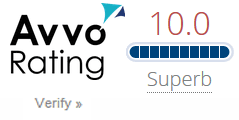California’s per–se DUI rule at 0.08% BAC
For drivers 21+, California’s per–se standard sets 0.08% BAC as the legal limit. DMV guidance explains that Administrative Per Se actions begin immediately, and you generally have 10 days to request a hearing (DMV Handbook: Alcohol & Drugs; DMV DUI overview).
On the criminal side, a first offense can include fines, probation, and potential custody. Outcomes depend on evidence strength, county practices, and whether aggravating factors apply.
High BAC at ≥ 0.15%: discretionary sentence enhancements
Vehicle Code § 23578 authorizes courts to impose additional penalties when a DUI involves an excessive BAC (commonly interpreted as ≥ 0.15%) or a chemical–test refusal. These can include longer DUI programs, added custody, and stricter probation terms, but they are not one–size–fits–all and depend on case facts and local policy.
Very high BAC at ≥ 0.20%: nine–month program requirement
For first offenders with a verified BAC of 0.20% or higher, Vehicle Code § 23538(b)(2) requires assignment to a nine–month DUI education program—longer than the three–month curriculum often ordered at lower BAC levels (statute; DMV’s first–offender summary PDF: link).
Why BAC isn’t always the last word
Breath and blood results are only as strong as the procedures behind them. We audit maintenance logs, operator training, observation periods, anticoagulants/preservatives in blood vials, and chain of custody. DMV and court frameworks both allow you to contest reliability and compliance (DMV DUI overview).
For roadside testing, standardized field sobriety tests must track NHTSA methods; deviations in footwear, surface, lighting, or instructions can undermine the state’s impairment narrative (NHTSA SFST resources).
Under–21 and special thresholds
California’s zero–tolerance rules apply at 0.01% BAC for drivers under 21. Commercial and rideshare contexts have lower limits as well. See DMV’s threshold chart for details (DMV Handbook).
Defense playbook: how we pressure–test BAC cases
- Discovery & data: Calibration, accuracy checks, and officer credentials.
- Timing & physiology: Rising BAC, GERD, mouth alcohol, hematocrit, or sample contamination.
- Procedure: Title 17 compliance, observation periods, and proper vial handling.
- Two–track strategy: DMV hearing within 10 days plus targeted court motions. Start here: https://www.caduilaw.com/court-dmv-trials/dmv-hearings/.
FAQs
What if my BAC reads exactly 0.08%?
It meets the per–se threshold, but results can be challenged on device and procedural grounds. Rising BAC and measurement uncertainty may be relevant.
Does 0.15% always mean jail time?
Not automatically. It authorizes enhanced penalties under § 23578, but courts retain discretion and defenses can mitigate.
What changes at 0.20%?
First offenders must complete a nine–month program under § 23538(b)(2). We often pair program compliance with motions and mitigation to limit custody.
Can I keep driving while I fight the case?
Possibly. Requesting a DMV hearing within 10 days can delay or contest a suspension depending on the facts (DMV DUI overview).
The bottom line
Higher BAC raises stakes, but it doesn’t end the conversation. Aggressive challenges to testing and procedure, paired with smart negotiations, can reshape outcomes. Braden & Tucci—Southern California’s Most Respected DUI Attorneys—is ready to protect your license and record.



Leave a Reply